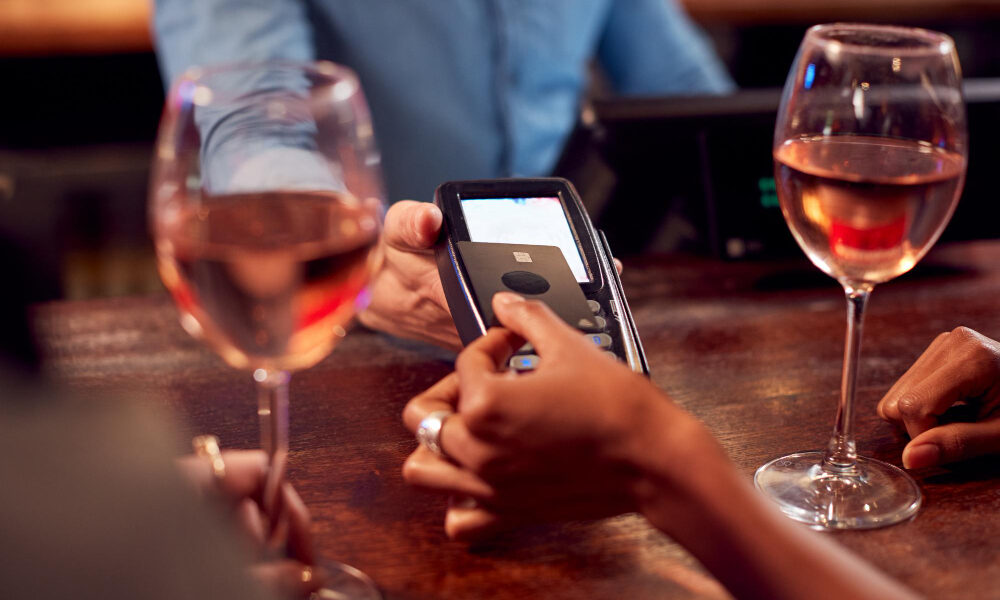Revolutionize Your Wine Shop’s Checkout Experience

The liquor store industry’s projected revenue of $81.6 billion shows a significant need to use the quickest ways for wine store POS systems in today’s competitive market. More than 156,000 Americans work in liquor stores, and modern checkout processes have become vital to stimulate business growth and keep customers happy.
A standard point-of-sale system doesn’t cut it for wine retailers anymore. Modern liquor store POS systems need complete features. These include automated inventory management, detailed sales tracking, and customer loyalty programs that can increase spending by up to 99%. Wine store POS systems must adapt to meet these changing needs while providing specialized tools for wine education and customer involvement.
This piece shows how wine store POS systems revolutionize the checkout experience and streamline operations for modern wine retailers. Readers will find practical solutions to improve their wine shop’s performance through inventory management and customer loyalty programs.
Understanding Modern Wine Shop Customer Expectations
Modern wine consumers have changed their shopping habits and expectations drastically. Store shelf browsing has given way to the need for sophisticated, customized experiences that combine convenience with a personal touch. Wine retailers face new challenges and opportunities as they try to stay competitive.
The Change Toward Customized Shopping Experiences
Wine consumers today struggle with what experts call “the paradox of choice” when picking wine. Too many options can paralyze shoppers. The overwhelming selection often results in indecision and smaller purchases. Many customers also avoid trying new wines because they fear disappointment.
Customization in wine retail helps solve these problems. Studies show that customized recommendations result in a remarkable 45% increase in consumer satisfaction with wine purchases. This has become essential rather than just a nice feature.
Modern wine shops customize their service in several ways:
- Product suggestions based on previous purchases and priorities
- Personal taste profiles from quizzes and surveys
- Birthday and celebration tracking
- Wine education that matches individual knowledge levels
Wine retailers now use technology to collect and analyze customer data. Their POS systems gather information to create detailed customer profiles. These profiles help the core team suggest wines that match individual tastes.
Customization does more than boost immediate sales. Wine shops that offer tailored experiences build stronger customer relationships that encourage loyalty. Marketing campaigns using POS systems have shown 40% more revenue than standard approaches.
How Technology Improves Customer Satisfaction
Technology makes these customized experiences possible. Wine retailers now utilize various digital tools to improve customer satisfaction throughout the shopping experience. AI and machine learning analyze big amounts of customer data to suggest wines more accurately.
Digital access through mobile-friendly interfaces has become crucial. Customers want accessible websites and efficient ordering that stays simple without losing the personal touch. In fact, mobile access is now a basic requirement rather than an extra feature.
The wine store POS system works as the hub for these technological features. Modern systems track customer purchases so staff can suggest products matching individual priorities. These systems also use customer profiles to send personalized marketing emails with offers for specific customer groups.
Technology enhances wine education beyond basic sales. Digital sommelier features and pairing suggestions help customers make better choices. Studies show that AI-powered recommendation systems can increase gross sales by 20% by making wine selection easier.
Smart-label technology marks another major step forward. Customers can scan QR codes on wine bottles to learn about origin, production methods, expert reviews, and customer feedback. This openness helps build trust in purchase decisions.
Wine shop customers want a smooth experience across all channels. Many start shopping online before visiting stores. So retailers must keep their service consistent everywhere. POS systems help create this complete view of customers across platforms.
Online experiences have grown popular, especially since the pandemic. Wine shops now offer virtual tastings, classes, and interactive events. These activities add value beyond sales and help build community connections.
Wine retailers must use technology thoughtfully to meet modern customer expectations. The right POS system helps deliver customized experiences, create efficient operations, and build lasting customer relationships. Those who adopt these digital tools position themselves to succeed in this competitive market.
Essential Features of Wine-Specific POS Systems
Wine retailers need specialized technology that works with their unique inventory and customer service requirements. Standard retail POS systems don’t deal very well with wine sales complexities. Wine-specific POS systems must include features that handle the subtle details of managing wine varieties, customer engagement, and modern payment processing.
Inventory Management Tailored for Wine Varieties
Wine stores face unique inventory challenges that regular POS systems can’t handle properly. Wine store POS systems must track specialized product attributes like vintages, varietals, regions, and production methods. These tracking features help store owners keep accurate records of their diverse catalogs.
The right wine store POS system lets retailers:
- Track inventory with custom attributes like grape, year, and origin
- Handle different units of measurement (individual bottles versus cases)
- Set automated reorder points to keep stock levels perfect
- Create purchase orders automatically when stock hits preset levels
Immediate inventory visibility on all sales channels makes a huge difference. Wine store POS systems like WinePOS should keep stock numbers in sync between physical stores and online shops, showing accurate counts, whatever channel customers use. This setup prevents those frustrating out-of-stock situations during busy seasons.
The best wine store POS systems go beyond simple tracking with predictive analytics that spot sales patterns and recommend stock adjustments. These systems look at past sales to predict future demand, which helps retailers make smarter buying decisions and manage cash better. Wine shops can cut down on waste, avoid mistakes, and keep the right amount of customer favorites in stock.
Customer Profile Integration
Great customer profiles in wine store POS systems turn one-time buyers into regulars. Staff can see all the important customer details right at checkout, which makes service more personal and meaningful. They’ll know purchase history, likes, and special dates instantly. Staff should see detailed purchase records to suggest wines based on what customers bought before. Wine-specific POS systems should also track wine club memberships, so staff can quickly check member status and give the right perks at checkout.
Managing addresses properly matters a lot in wine store POS systems. Staff should be able to update shipping details and set main addresses for regular deliveries quickly. This feature becomes crucial for wine clubs and repeat orders.
Customer segmentation tools let wine retailers group their customers smartly. Staff can tag customers based on what they like, how often they buy, or other important factors. These groups make it easy to send targeted messages and special offers that bring customers back.
Wine Education Tools at Checkout
Today’s wine buyers want knowledge with their purchase. Leading wine store POS systems now include educational features right at checkout. Digital sommelier tools give staff quick access to wine details, so they can answer customer questions with confidence.
POS systems might include digital tasting notes, pronunciation guides, and interactive learning tools. Some systems also have visual aids like digital flashcards that staff can check during customer conversations.
Food pairing suggestions are a great way to get more value from checkout. POS systems can show food matches for each wine, which makes shopping more interesting. Customers make better choices, and the store becomes their go-to wine expert.
Mobile Payment Options
Wine retailers must offer mobile payments to keep up with modern shopping habits. Wine POS systems should work with various payment types, including mobile wallets and contactless payments. This flexibility matches what customers want and speeds up checkout.
Mobile POS lets staff take payments anywhere in the store, not just at fixed registers. This mobility shines during wine tastings and events, where staff can complete sales right where customers decide to buy.
Key payment features include:
- Support for multiple payment types, including credit cards and digital wallets
- Working with or without an internet connection
- Smooth connection with existing accounting systems
The right wine-specific POS system will boost inventory accuracy, create stronger customer connections, improve wine education, and offer payment options that match today’s shopping needs.
Conclusion
Wine retailers can boost their operations with specialized POS systems. These tools are a great way to get everything they need – from inventory management and customer insights to educational features that blend into smooth checkout experiences.
Today’s successful wine shops stand out by using analytical insights, detailed customer profiles, and loyalty programs that work together. Wine store POS systems with detailed analytics help retailers make smart choices about their inventory, marketing, and ways customers participate in store activities.
Retailers who adopt these tech advances while focusing on customer relationships will thrive. Smart use of wine-specific POS features helps stores create lasting bonds with customers through individual-specific recommendations, targeted marketing, and improved educational experiences.
Stores that combine reliable POS features with excellent customer service set themselves up for success in this competitive market. Their achievements come from knowing that modern POS systems do more than handle sales – they create memorable shopping moments that turn first-time buyers into regular customers.





